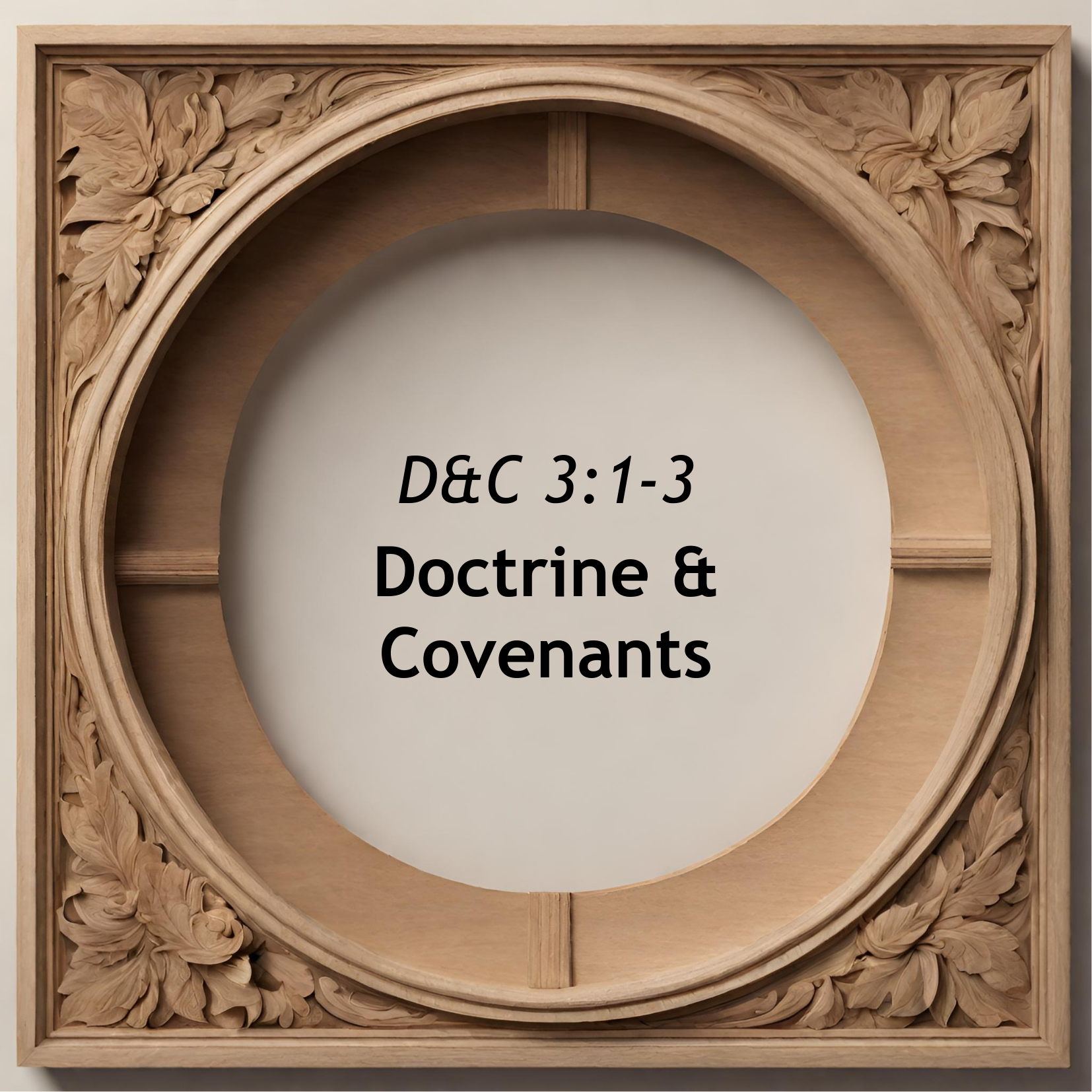Straight paths and eternal rounds
Deciphering unchanging circles

The works, and the designs, and the purposes of God cannot be frustrated, neither can they come to naught.
For God doth not walk in crooked paths, neither doth he turn to the right hand nor to the left, neither doth he vary from that which he hath said, therefore his paths are straight, and his course is one eternal round.
Remember, remember that it is not the work of God that is frustrated, but the work of men;
For although a man may have many revelations, and have power to do many mighty works, yet if he boasts in his own strength, and sets at naught the counsels of God, and follows after the dictates of his own will and carnal desires, he must fall and incur the vengeance of a just God upon him.
The Doctrine and Covenants, The Doctrine and Covenants 3:1-3
Materialist
These phrases focus on a lack of haphazardness or that His plan and intentions don’t lack predictability.
- crooked paths: The Hebrew word for crooked means fraudulent, deceitful, sly, or slippery. The Greek word for crooked is
skolios, meaning perverse, wicked, or curved. In Greek, deceive (related to deceitful) means to go astray, to wander or roam about, to be led aside from the path of virtue, or to be led into error or sin – all good descriptions of the crooked path.1 - right hand nor to the left hand: Perhaps the most common usage of right and left in the Bible is as a merism meaning “everywhere, in any direction.” The phrase “to deviate from the path in any direction” (Num. 20:17; 22:26; Deut. 2:27; 5:29; 17:11; I Sam. 6:12, etc.) is so common that it had probably reached the level of a cliché in early biblical times. In the same way, the verbal forms “to go right” and “to go left” are used together, meaning “to depart from in any way” (II Sam. 14:19; Isa. 30:21). The meaning “everywhere” is also prevalent for this merism (I Kings 22:19; Isa. 9:19; Zech. 12:6, etc.).2
- neither doth he vary from that which he hath said: This word gets close to a statistical phrase. We would read vary as arbitrarily or randomly walk3 instead of any change. Under a materialist reading, we would identify that He has an expected trend with predictability but includes noise as he responds to His loving children.
- one eternal round: ‘One eternal round’ opens our minds to see God’s efforts as consistent and ever-repeating in His love for His children. There wasn’t a moment where God’s purpose started, and there will not be a moment where it ends. We can think of a round as a boxing match or golf game instead of a circle. To paraphrase Moses 1:39, ‘For behold, this is my one eternal round—to bring to pass the immortality and eternal life of man.’ 4
In summary
His ‘eternal round’ guarantees that we can trust Him and that his actions consistently move backward and forwards throughout all time in one eternal space. A random walk or intentional perverseness does not describe his act in time. His consistency is defined by love, not exact obedience.
Idealist
- crooked paths: God’s paths are straight. They don’t curve or adapt.
- right hand nor to the left hand: A repeat of the previous phrase. He walks in straight paths and doesn’t deviate off the path.
- neither doth he vary from that which he hath said: God’s words are like his intention. They don’t change. Maybe we change, or our understanding of His words changes. However, He doesn’t change.
- one eternal round: This unique phrase of Latter-day scripture implies circles which are ideal constructs of mathematics. Based on the previous parts of these verses, he is undeviating in a perfect (non-crooked) circular path. Often seen as His repeated interactions with creation after creation.
In summary
God does not change his straight paths. While he never says He makes his paths straight, he all but implies it with the varied phrasings that suggest what he doesn’t do concerning navigating life. Eternal round isn’t seen as a conflict as it focuses on the repetition of his interactions throughout eternity. His path moves forward with or without us, and He doesn’t get off His track. He is precisely obedient to eternal law and expects us to get there as well.
One Eternal Round
Notice how Aristotle created this dualist view that science and religion have held for thousands of years.
In Aristotle’s worldview, the universe consisted of two separate and distinct regions: the sublunar and the superlunar. The sublunar region — the realm of humans — was a place of imperfection, starkly contrasting with the perfect and unchanging circular motions of the superlunar. Aristotle truly believed that “this circular motion is necessarily primary. For the perfect is naturally prior to the imperfect, and the circle is a perfect thing. This cannot be said of any straight line.” Indeed, this belief in perfect circles and uniform circular motion as constituting fundamental, essential features of the universe would become so deeply held that for the next two thousand years it would be treated as fact — a given of scientific theory.5
Footnotes
In Isaiah 40:4, the word is ‘aqob’, meaning ‘crooked (as in deceitful, fraudulent, polluted)’. In Isaiah 42:16, the word is ‘maaqash’, meaning ‘crooked (as in a path or a road)’. In Isaiah 45:2, the word is ‘hadar’, meaning ‘crooked (as in to swell up, to be proud, i.e., the pride of men)’. reference↩︎
Time series analysis builds a language of trends versus random walks. The concept is fruitful for our discussion. Read more↩︎
One eternal round and The Church of Jesus Christ of Latter-day Saints | Most Moved Mover↩︎
Mormonism and the Scientific Persistence of Circles: Aristotle, Spacetime, and One Eternal Round | The Interpreter Foundation↩︎